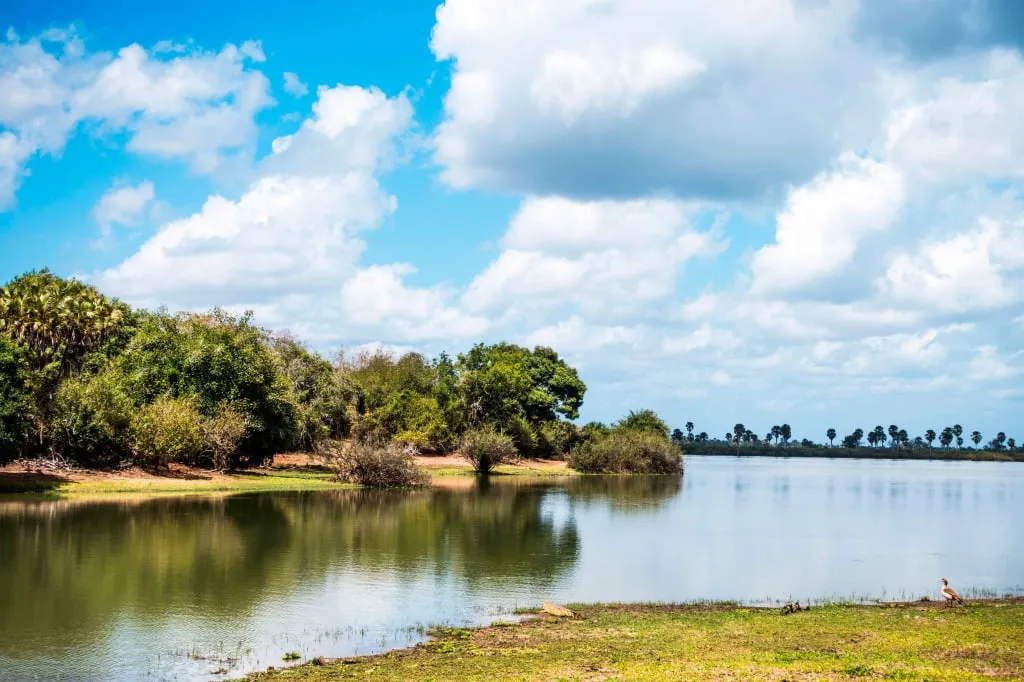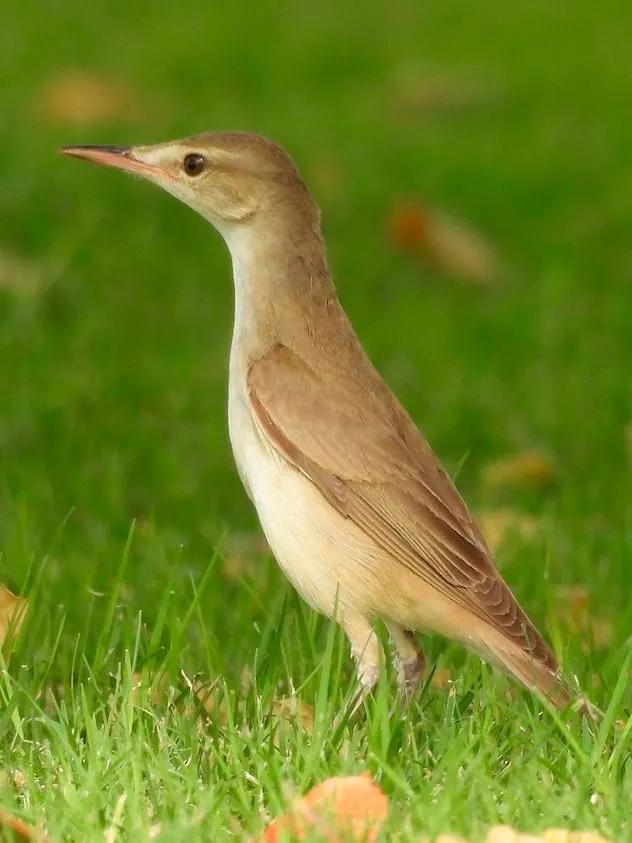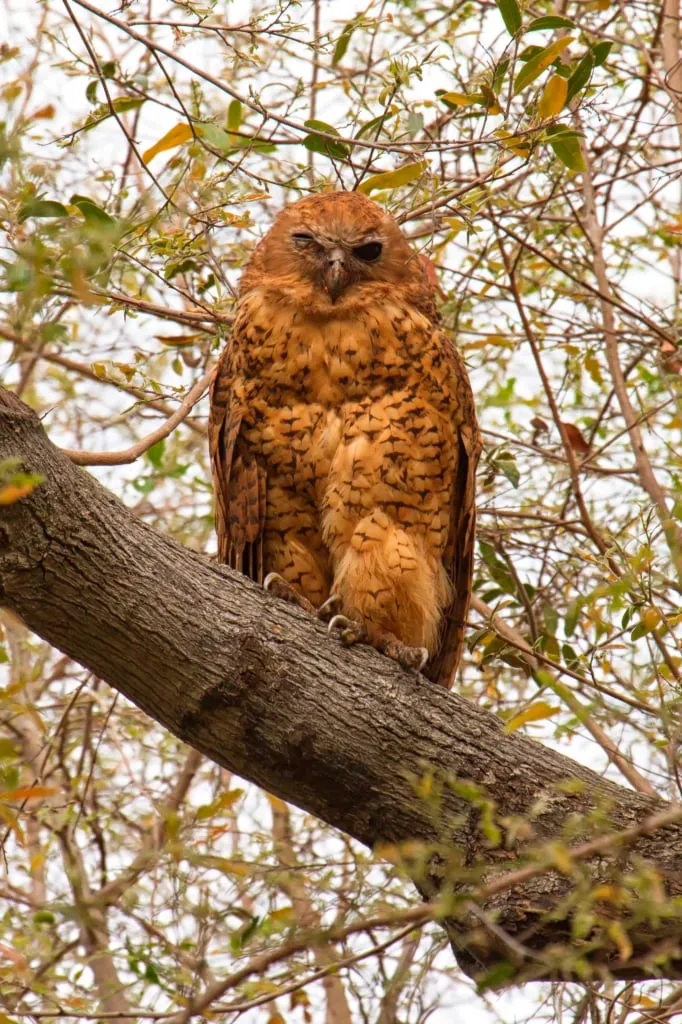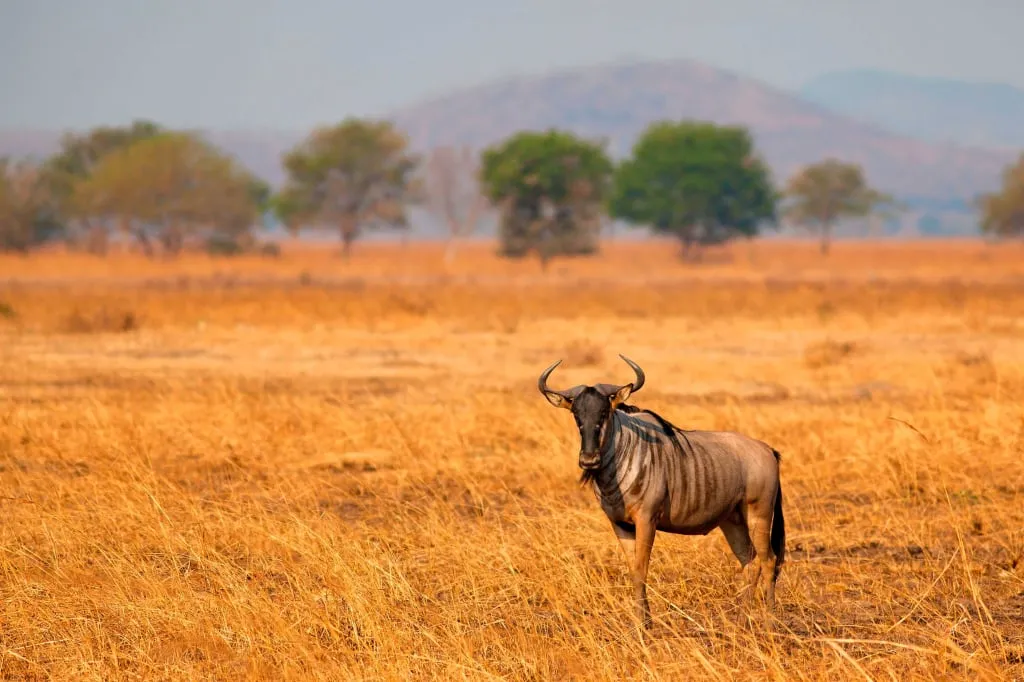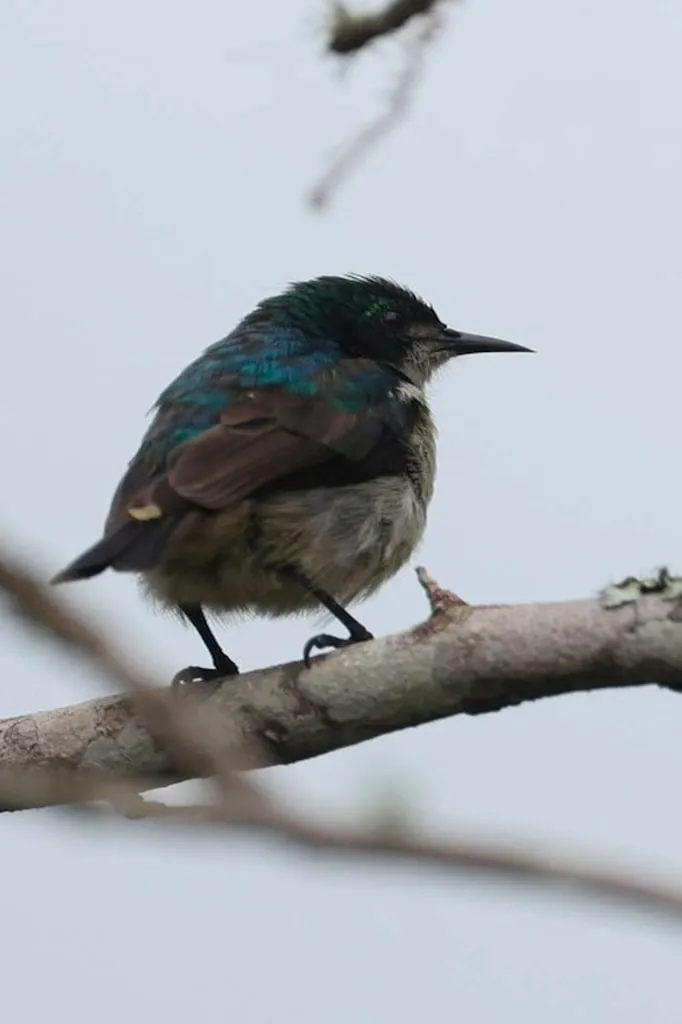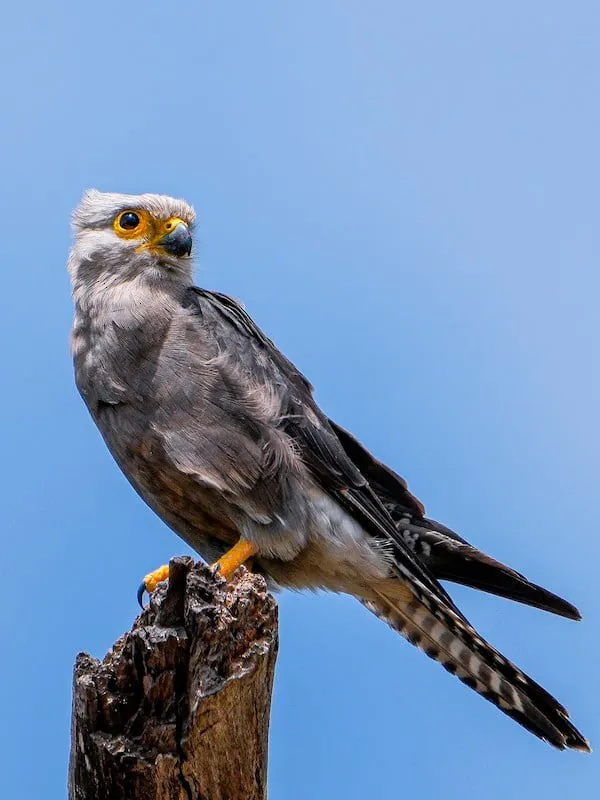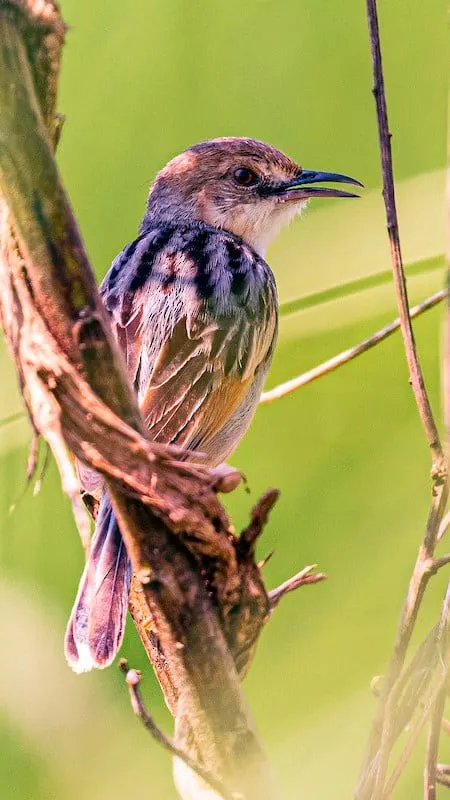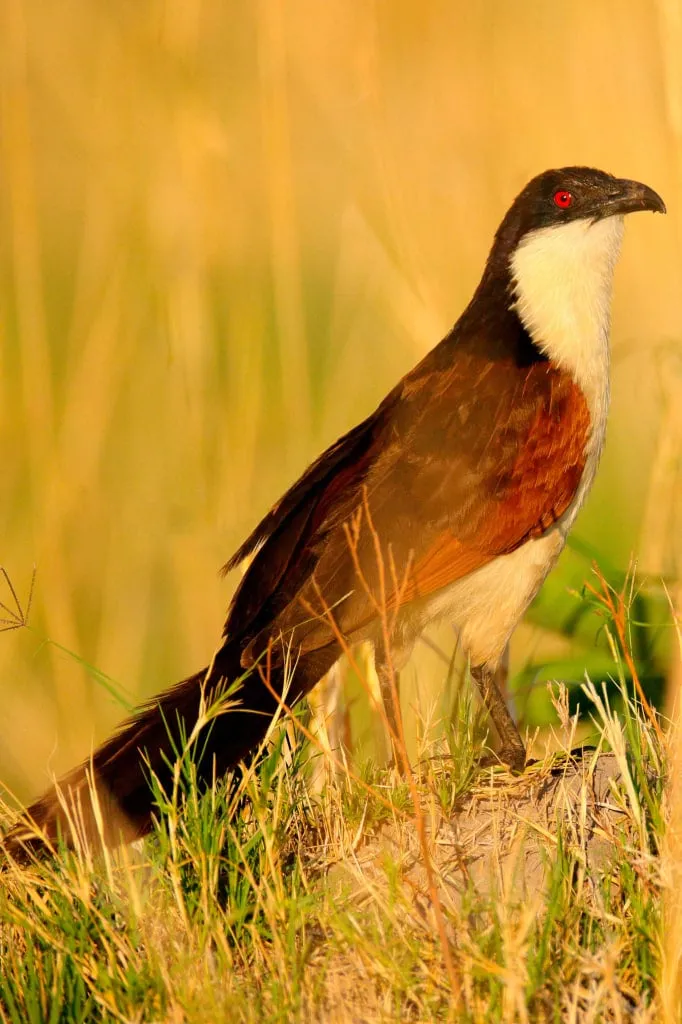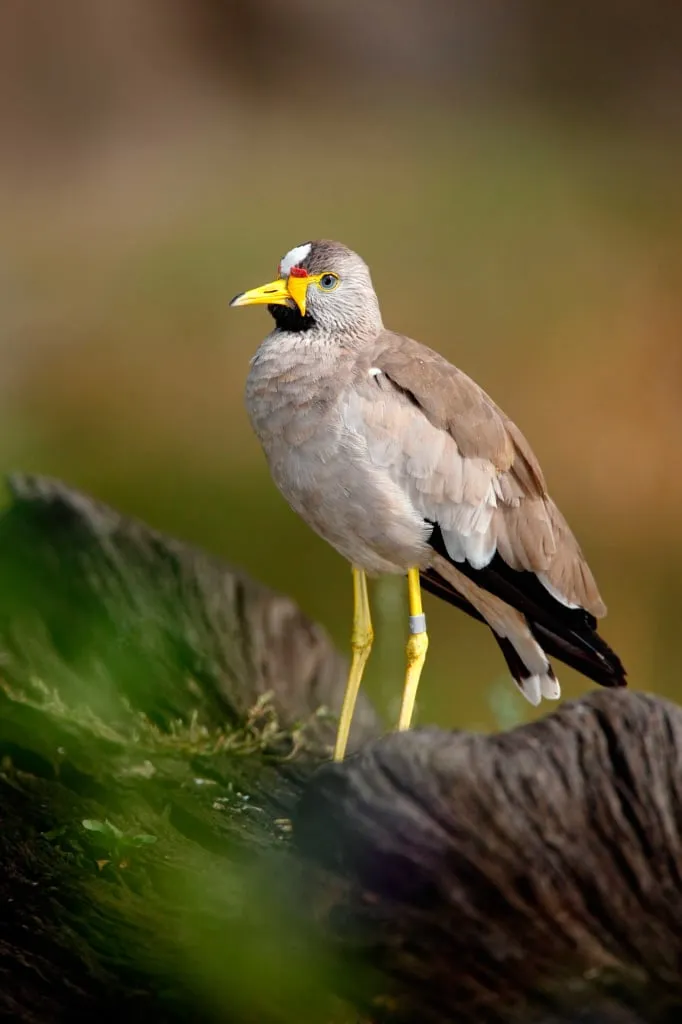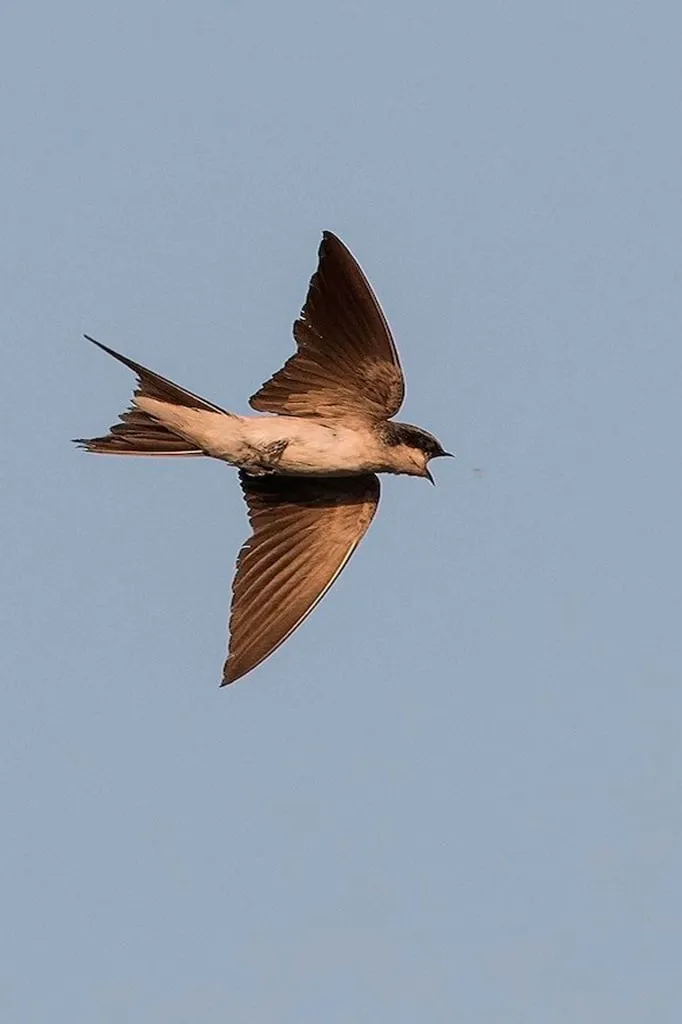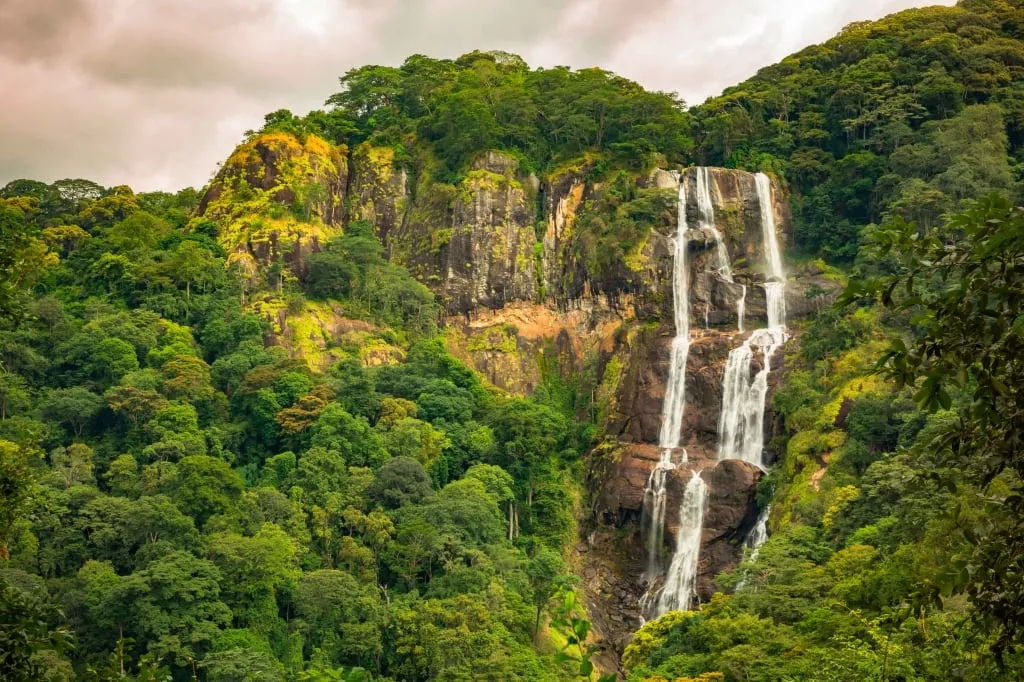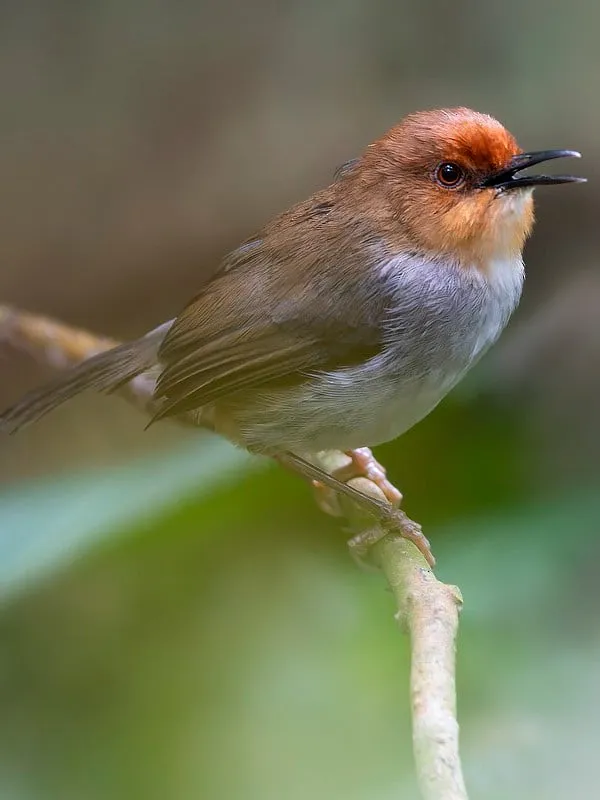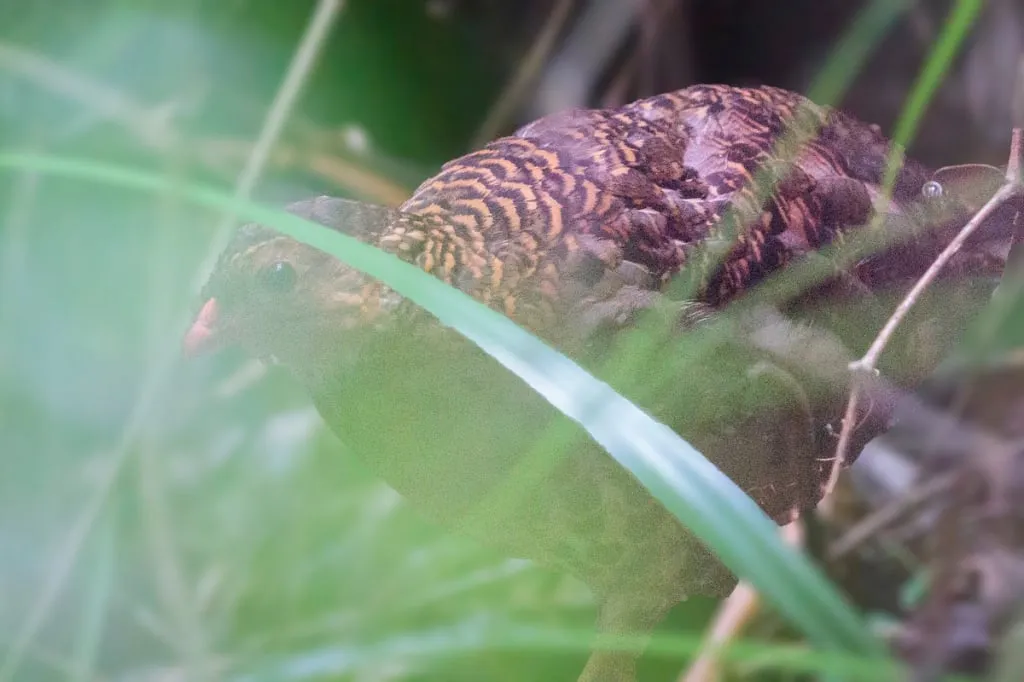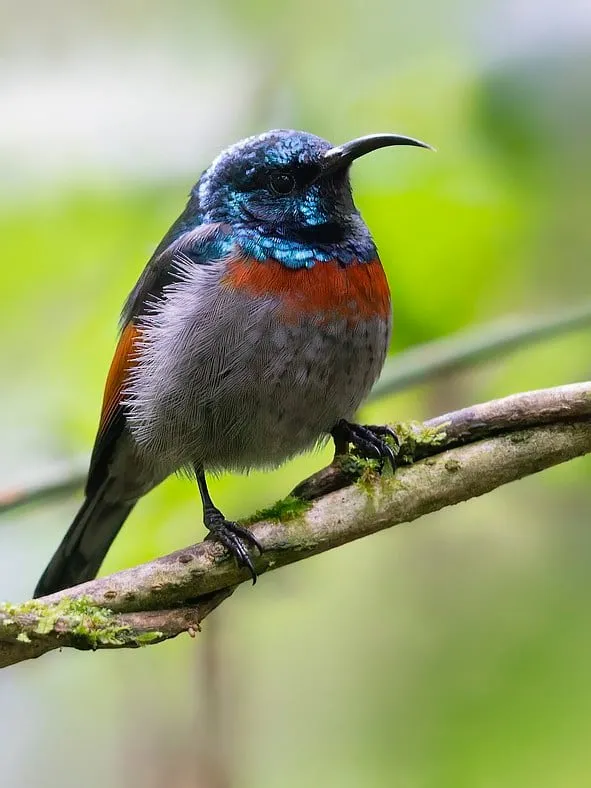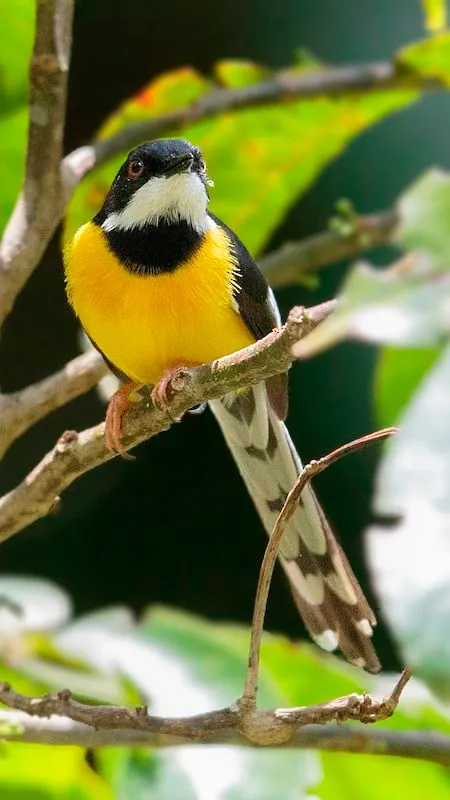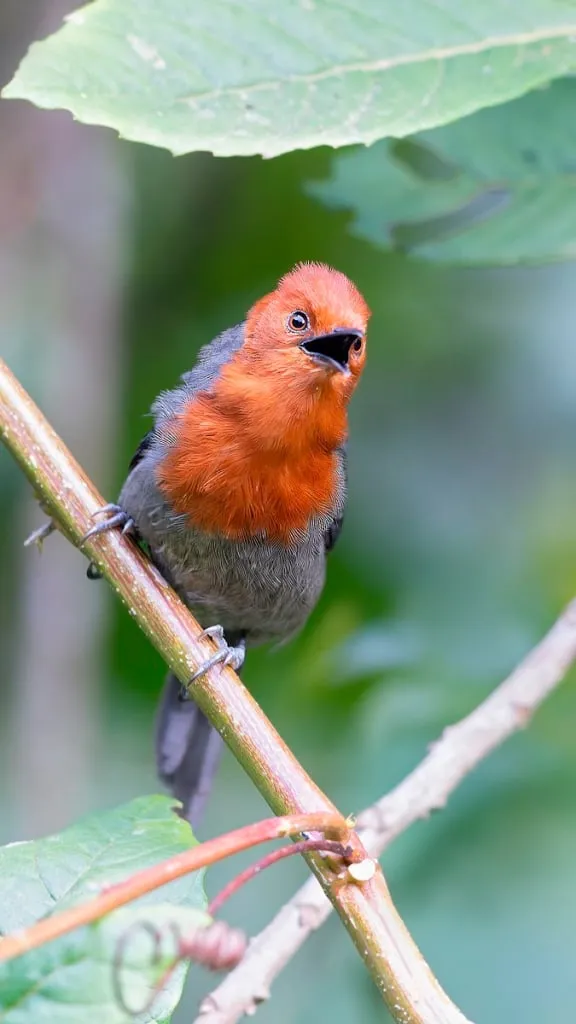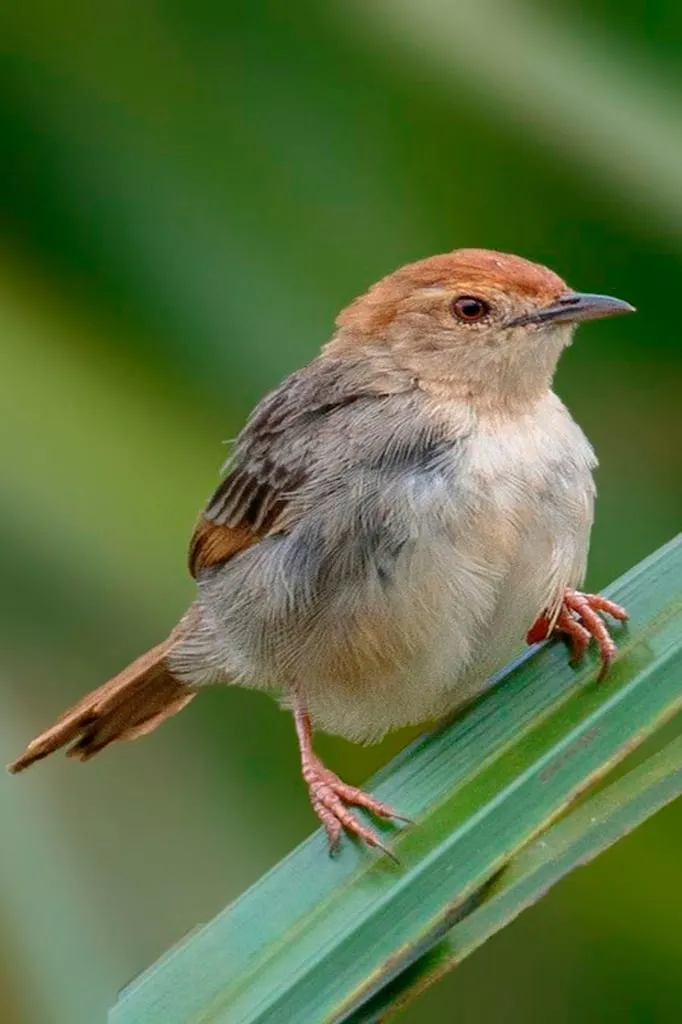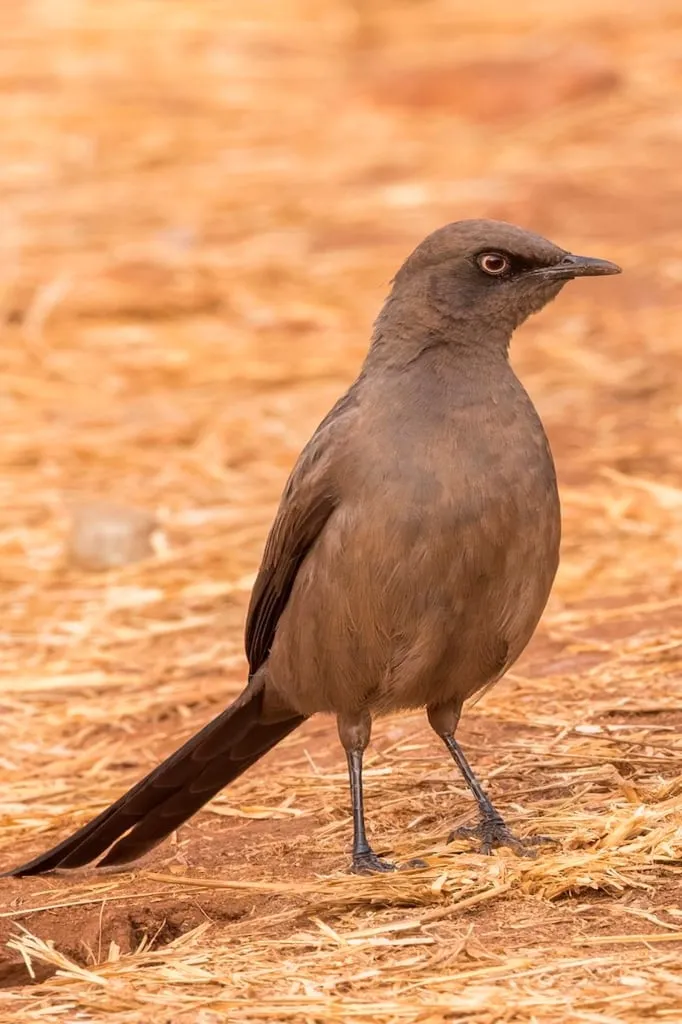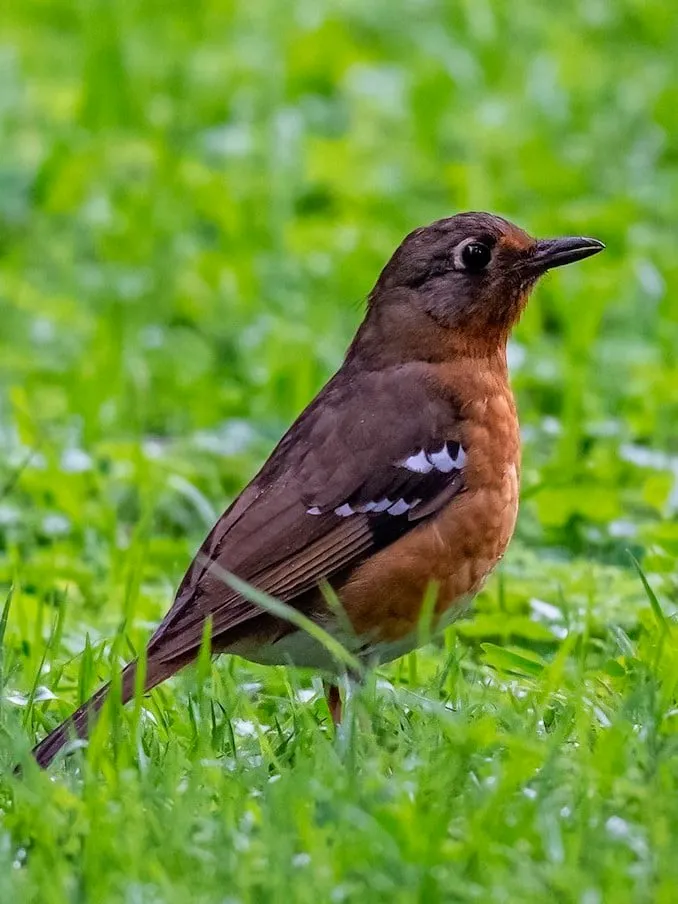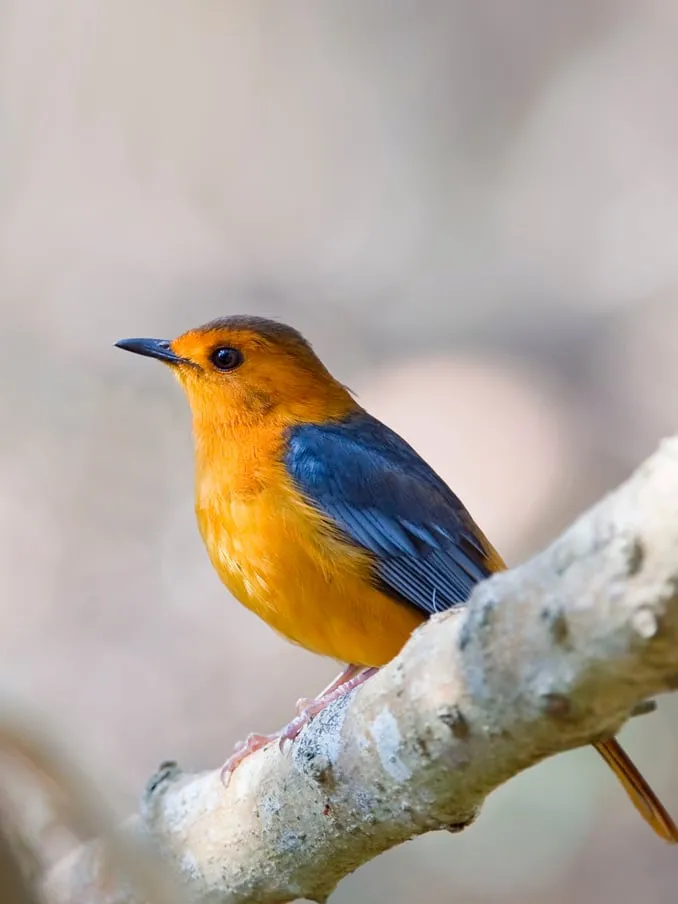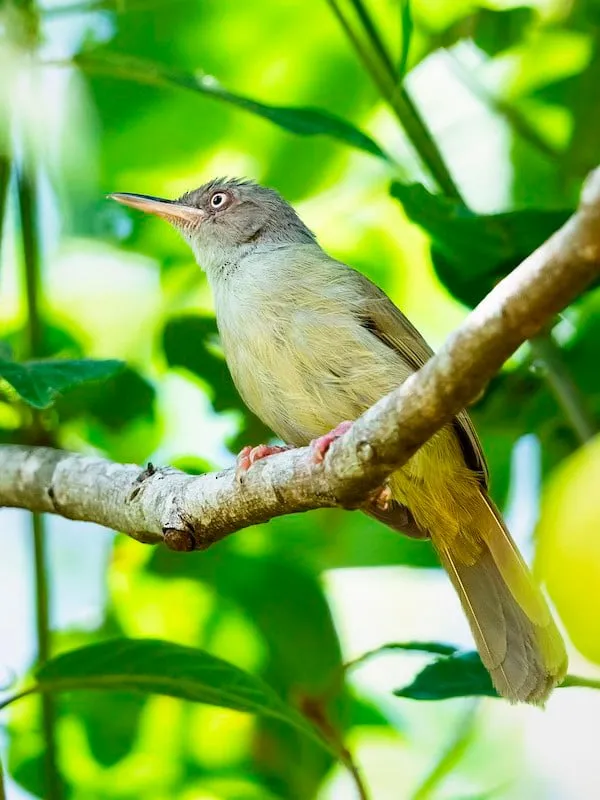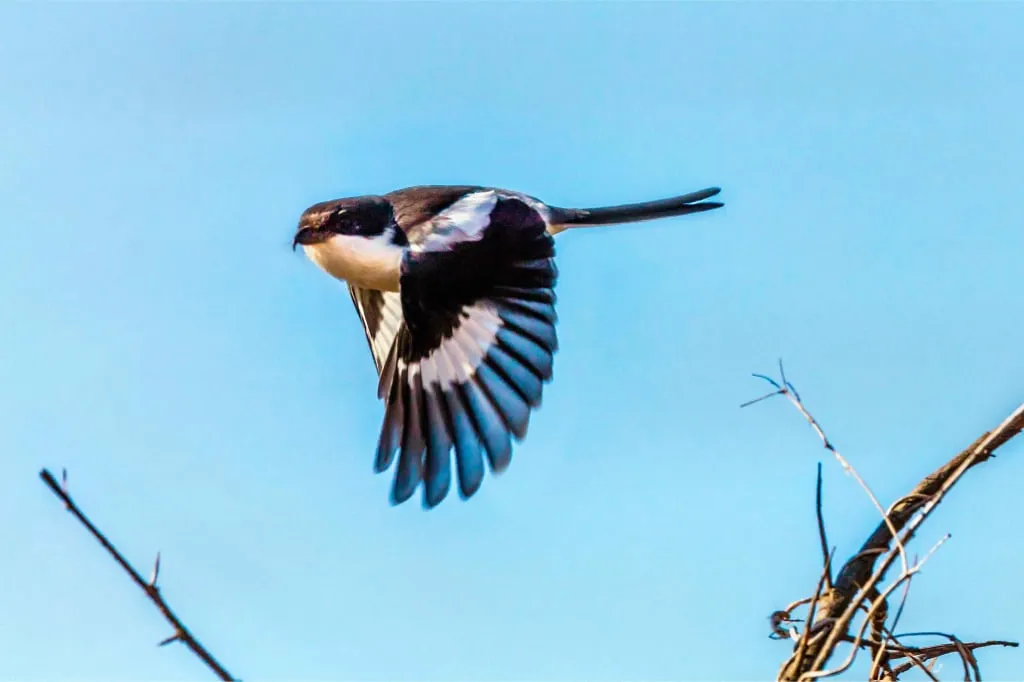If you are planning to go on a Tanzania birding trip to the depths of the country’s incredible nature remote from the popular routes, it is worth carefully exploring the most promising locations where interesting and rare bird species live. In this article, we talk about some well-known wildlife reserves and national parks: the Selous, Nyerere, Mikumi and Udzungwa Mountains. We also look at neighboring areas, such as that part of the Udzungwa that is not included in the national park, but is of interest to birders and ornithologists. We’ll be sure to mention the neighboring Kilombero Valley, made famous by a couple of cisticolas from there, which have only recently been described and identified as separate species.
For those interested in the Usangu Plains that lie to the west, Ruaha National Park, the Kitulo Plateau, and the southernmost mountain formations of the Great Rift, we recommend checking out the article on birdwatching in those areas. And for those planning to go on birding tours to Tanzania east of Selous, we suggest taking a look at our selections of the easternmost locations in Tanzania: around Dar es Salaam, including Zanzibar Island, and the southern forest reserves, both on the mainland coast and on Mafia Island.
In this article, we will explore several amazing Tanzania birding spots: The Selous Game Reserve, Mikumi National Park, Kilombero Valley, Undzungwa Mountains and the national park of the same name, as well as Rubeho Mountains.
The Selous Game Reserve
To the southeast of the Great Rift stretches a vast expanse of land that houses Tanzania's largest natural attractions: the country's largest national park - Nyerere, the largest game reserve - Selous, and the longest river - Rufiji, whose delta contains one of the largest mangrove forests in the world. Of course, such natural richness has an impact on the birding world as well.
Many sources list the Selous as a huge hunting reserve of about 50,000 square kilometers (19305 sq miles). In 2019, an area of about 30,000 square kilometers (11583 sq miles) was separated from it, becoming Nyerere National Park, while the rest of the area remained a protected area with controlled animal populations. When mentioning the name Selous, we will talk about this whole area as it was historically named. Referring to checklists, such as those at ebird.org, also see birding hotspot marks made in the North Sector of Selous.
The Malagasy Pond Heron (Ardeola idae), Pale or Pallid Harrier (Circus macrourus), and Lesser Kestrel (Falco naumanni) can be found in the Selous. These places have not been studied in detail, so some records are either outdated or very few, which does not allow for confirmation of the current presence of some species and their precise populations in this zone. For example, the occurrence of the Corn Crake (Crex crex) and representatives of such endangered species as the Basra Reed Warbler (Acrocephalus griseldis) were reported in the Selous. Basra Reed Warblers like to settle in thickets in shallow water, preferring reedbeds. Due to the lack of data, it may be the case that these birds are more common here than is known.
Undoubtedly, the Tanzanian endemic Kilombero Weaver (Ploceus burnieri) is of great interest to bird watchers. Its typical habitat is the swamps around the Kilombero River, also known as the Ulanga River. It is one of the tributaries of the Rufiji River. The bird has also been seen in seasonally flooded meadows near the town of Ifakara. The weaver nests in colonies of up to 30 nests, although solitary individuals are also observed. Unfortunately, this endemic has been given the status of a threatened species.
Among interesting waterfowl, it is worth noting the White-backed Night Heron (Gorsachius leuconotus), Saddle-billed Stork (Ephippiorhynchus senegalensis), African Skimmer (Rynchops flavirostris), which prefers to fish at night, and Pel's Fishing Owl (Scotopelia peli), which hunts fish and even baby crocodiles. These owls are worth looking for near rivers; they nest in trees at a height of 3 to 12 meters (10 to 33 feet), usually not further than 50 meters (164 feet) from the river. Being quite large and reaching 50-60 centimeters (19,7-23.6 inches) in height, Pel's Fishing Owls sometimes select large prey: from frogs and crabs to fish weighing two kilos (4.4 lb) and hatchlings of the Nile crocodile. They are most active at night. During the hunt, they can be seen sitting on stumps and branches overhanging the water. The good news for birders is that sometimes these owls are spotted hunting during the day.
Other species found in the Selous include the African Pitta (Pitta angolensis), Lesser Seedcracker (Pyrenestes minor), and Rock Pratincole (Glareola nuchalis). The latter two species are observed near Siguri Falls on the Luhombero River. Unfortunately, there is no complete list of species for the Selous. The administration of Nyerere National Park claims that a minimum of 450 bird species can be found in this Tanzania's largest national park.
Mikumi National Park
Another national park, Mikumi, adjoins Nyerere National Park from the northwest. Located less than 300 kilometers (186 miles) from Dar es Salaam, on the road from Dar across Tanzania to Zambia, this NP attracts a large number of tourists, for which it is often compared to the famed Serengeti in the north. Mikumi is easily and quickly accessible and is crossed by the road in the middle. There are so many bird species recorded here that Mikumi is one of Tanzania's top 10 birding hotspots on ebird.org. In total, more than 500 species of birds can be found here!
If we talk about rare and unusual species, it is worth mentioning the Red-throated Wryneck (Jynx ruficollis) that lives in the forests on the border of the park, Uluguru Violet-backed Sunbird (Anthreptes neglectus), and the aggressive and fearless Common Square-tailed Drongo (Dicrurus ludwigii).
The Pale-billed Hornbill (Lophoceros pallidirostris), African Grey Hornbill (Lophoceros nasutus), Dickinson's Kestrel (Falco dickinsoni) and the Grey Kestrel (Falco ardosiaceus) also live in Mikumi. Both kestrels are often observed in forests where palm trees grow. Dickinson's Kestrels seek out dead palms or hollow baobabs to build their nests. They are known to appear during grass fires, preying on large insects and rodents escaping the fire. Grey Kestrels prefer to perch on utility poles, wires, and open branches, and hunt bats and birds, while not denying themselves the pleasure of eating palm nuts, making it one of the few raptors with a taste for plant food.
In addition to the waters of the Mkata River, Mikumi has permanent marshes in its floodplain that attract the Malagasy Pond Heron (Ardeola idae). In general, these marshes become a haven for many birds migrating toward the north. The Corn Crake (Crex crex) and the Lesser Kestrel (Falco naumanni) have also been spotted in the national park.
As for Tanzanian endemics, Mikumi is home to the Yellow-collared Lovebird (Agapornis personatus), This species along with Cisticola bakerorum was described by scientists only in 2021, although specimens were found as early as the 1960s in the Kilombero River floodplain in Tanzania. Museum specimens were kept in collections, but no one attempted to classify them because of their specific plumage coloration. These birds prefer to settle in flooded reedbeds, their endemic area being the Kilombero swamps in Morogoro, central Tanzania. Nevertheless, a record has been made in the Serengeti confirming the discovery of this species in northern Tanzania. We recommend that this information be treated with caution, and when visiting the Serengeti, be especially careful in identifying the many species of cisticola. Confirmation of the expansion of the range of the White-tailed Cisticola would be important information for ornithology. (Cisticola anderseni), Kilombero Weaver (Ploceus burnieri), Tanzanian Red-billed Hornbill (Tockus ruahae), as well as the Uluguru Greenbul (Arizelocichla neumanni) and the Kilombero Cisticola (Cisticola bakerorum), named after Éric Burnier who first recognized this species as new, although it was not formally described until 2021. The Kilombero Cisticola is classified as vulnerable. This bird prefers marshes in the Kilombero River floodplain, dwelling in flooded reedbeds.
Kilombero Valley
To the northwest of the Selous lies the Kilombero River Valley. It extends to the Udzungwa Mountains, and is bordered to the south by the Mahenge mountain range. Both of these mountain systems are the southernmost parts of the Great Rift Valley, which in Tanzania begins in the north of the country from the Pare and Usambara mountains. The width of the river depends on the season and the amount of rainfall in the region. If in the dry season, from June to November, near Ifakara city the river is only about 100 meters (328 feet) wide. In the rainy season, between December and May, the river floods spread for 6 kilometers (3,7 miles), flooding vast meadows, which is exactly what attracts birds here. In addition to open areas, there are also forests in the valley.
First of all, this area is interesting for its local endemics. These are the Kilombero Weaver (Ploceus burnieri), the White-tailed Cisticola (Cisticola anderseni) and the Kilombero Cisticola (Cisticola bakerorum). Along with the Selous Reserve, the Kilombero Valley is an important habitat for the Malagasy Pond Heron (Ardeola idae).
In the local forests here you can spot the Stierling's Woodpecker (Dendropicos stierlingi). The local forest reserves are also home to many alpine species that winter here during the cold season. The river also attracts the African Skimmer (Rynchops flavirostris) and the African Openbill (Anastomus lamelligerus). The coastal forests are home to the Half-collared Kingfisher (Alcedo semitorquata), African Finfoot (Podica senegalensis), African Black Duck (Anas sparsa), White-backed Night Heron (Gorsachius leuconotus), and Pel's Fishing Owl (Scotopelia peli). In general, due to proximity and lack of natural barriers, species in the valley in many ways overlap with those in the Selous.
Sedge Warbler (Acrocephalus schoenobaenus) can be found in reed beds here. The Kilombero Valley is believed to be home to the only population of the Coppery-tailed Coucal (Centropus cupreicaudus) in all of East Africa. The African Wattled Lapwing (Vanellus senegallus), easily recognizable by its long yellow legs and yellow beak with large facial wattles, can be found here too. Grey-rumped Swallows (Pseudhirundo griseopyga) can often be observed in the air.
On the birding website ebird.org, the hotspot designated as Kilombero Swamp south of the town of Ifakara includes more than 250 bird species.
Udzungwa Mountains
The Uzungwa Mountains in this case refers to a group of fragmented zones that are not part of the national park of the same name. The Uzungwa Mountains are the southernmost, or more precisely, the southwesternmost part of the mountain ranges that make up the ancient Great Rift. These mountains were originally covered by dense forests, which today have been heavily thinned and converted into pasture and farmland. The remaining portions of the forest are still home to many birds and therefore are of interest to birders. First and foremost, those protected forest areas are the West Kilombero, Kisinga-Rugaro, and Udzungwa Scarp.
Many species can be found in the forests of Uzungwa, such as the Bertram's Weaver (Ploceus bertrandi), Red-capped Forest Warbler (Artisornis metopias), Black-lored Cisticola (Cisticola nigriloris), Spot-throat (Modulatrix stictigula), Olive-flanked Ground Robin (Cossypha anomala), Sharpe's Akalat (Sheppardia sharpei), White-chested Alethe (Chamaetylas fuelleborni), Dapple-throat (Arcanator orostruthus), and Scarce Swift (Schoutedenapus myoptilus). Interestingly, in the forest reserves of Udzungwa, the populations of all these species are unusually large compared to the typical densities in comparable locations. This means that it is easier to see them here than elsewhere.
Neither for the forest areas of these mountains nor for the national park, alas, there are no complete species lists. However, the national park is among the best birdwatching spots in Tanzania.
Udzungwa Mountains National Park
The national park spreads over mountain ranges covered with Miombo woodlands, rainforests, and mountain forests. In addition to these, there are also areas of open steppes. The elevation of the park ranges from 250 to 2,576 meters above sea level. Several waterfalls descend from the rocky mountains, forming natural pools on its steps. There is a high number of endemic species among both plants and animals here. For example, about a quarter of all local plants are endemics. Udzungwa is believed to be Tanzania's second national park in terms of biodiversity. More than 350 species of birds have been recorded in Udzungwa National Park.
The local endemics attract the most interest and attention. We can start with the Udzungwa Forest Partridge (Xenoperdix udzungwensis). It is a member of the Phasianidae family and has yellow legs and a red beak. This species was discovered in 1991. It was its unusual legs that were noticed - according to the story, people in the camp were making soup, and the bird's legs were sticking out of the pot; no one present was able to identify them. This seemed strange and sparked interest in the bird, resulting in the discovery of the species. Its closest relatives are believed to be the mountain partridges of Asia. Some speculate that these species may have descended from a common ancestor whose members split up, taking advantage of an earlier forest corridor between Africa and Asia on the Arabian Peninsula.
Other Tanzanian endemics in the national park include the Tanzanian Red-billed Hornbill (Tockus ruahae), Dark Batis (Batis crypta), White-tailed Cisticola (Cisticola anderseni), Kilombero Cisticola (Cisticola bakerorum), Yellow-throated Greenbul (Arizelocichla chlorigula), Iringa Akalat (Sheppardia lowei), Banded Green Sunbird (Anthreptes rubritorques), Moreau's Sunbird (Cinnyris moreaui) and Rufous-winged Sunbird (Cinnyris rufipennis), Usambara Weaver (Ploceus nicolli) and Kipengere Seedeater (Crithagra melanochroa). Alas, all three species of endemic sunbirds living in Udzungwa are under threat of extinction.
The Southern Banded Snake Eagle (Circaetus fasciolatus) was seen in a low forest at the foot of the mountains, and Swynnerton's Robin (Swynnertonia swynnertoni) was observed deeper in the forest. White-winged Apalis (Apalis chariessa) is a rare but still possible sight in the forest. The forest undergrowth is inhabited by the Winifred's Warbler (Scepomycter winifredae), which, by the way, is considered endemic to the mountain forests of Tanzania. More often these birds are observed in the Uluguru Mountains; there is also a population in Rubeho-Ukaguru. It would be great luck to encounter the Winifred's Warbler in the Udzungwa Mountains.
There is a high likelihood of the Usambara Eagle-owl (Bubo vosseleri) appearing in the national park. There is an ongoing scientific debate about whether it is a separate species or a subspecies of the Fraser's Eagle-owl (Ketupa poensis). Different classifications of this species are possible. In case it is still a subspecies of the Fraser's Eagle-owl, it should be called Bubo poensis vosseleri.
The Churring Cisticola (Cisticola njombe) and Blue Swallow (Hirundo atrocaerulea) can be considered interesting species of rare occurrence here. Returning to the topic of scientific disputes and endemic species, we can say that in the Udzungwa Mountains birders observed the Ashy Starling (Lamprotornis unicolor), which not all ornithologists classify as a Tanzania endemic. The Yellow-collared Lovebird (Agapornis personatus) may also appear here.
Rubeho Mountains
North of the Udzungwa there is the Rubeho mountain range; the two are separated by the Ruaha River. These mountains are connected to Mikumi National Park in the east, which is one of the hottest spots for birdwatching, due to the great diversity of species that inhabit the NP. Important birdwatching areas in the Rubejo Mountains are the three forest reserves located at elevations of up to 2,500 meters (8202 feet).
Interestingly, the territory here is shared by the Orange Ground Thrush (Geokichla gurneyi) and Red-capped Robin-chat (Cossypha natalensis), despite the fact that the former is considered a mountain dweller and the latter prefers to settle at lower altitudes.
Near the river you can spot the African Black Duck (Anas sparsa), White-backed Night Heron (Gorsachius leuconotus), and African Finfoot (Podica senegalensis). In lowland forests you can come across the Kretschmer's Longbill (Macrosphenus kretschmeri). Another beautiful bird, the Miombo Rock Thrush (Monticola angolensis), also lives here.
The Ashy Flycatcher (Muscicapa caerulescens), Bar-tailed Trogon (Apaloderma vittatum), Scarce Swift (Schoutedenapus myoptilus), and Buff-spotted Flufftail (Sarothrura elegans) live in the forests of Rubeho. Of sunbirds, the Eastern Double-collared Sunbird (Cinnyris mediocris) and Moreau's Sunbird (Cinnyris moreaui) were observed in the Rubeho Mountains.
An interesting story is told about another local bird - the Uhehe Fiscal (Lanius marwitzi). Under this scientific name, it is known as an endemic of Tanzania, inhabiting several mountain areas higher than 1500 meters (4920 feet) above sea level. But the taxonomy of this species is confusing. Some ornithologists classify it as a subspecies of the Southern Fiscal (Lanius collaris). It can be found under this species in most classifications. In the wild it is easiest to find this bird perching on shrubs or tree branches 1-10 meters (3-30 feet) above the ground.
This was a brief overview of the locations that make up the Selous ecosystem, as well as the nearby mountain ranges, the core of which is the Udzungwa mountain range. On the other side of the mountains, there are the expanses of Ruaha National Park and the Usangu Plain. Read about all other amazing places for birdwatching in Tanzania in our overview article "Tanzania. Top 10 Locations for Birdwatching"!
All content on Altezza Travel is created with expert insights and thorough research, in line with our Editorial Policy.
Want to know more about Tanzania adventures?
Get in touch with our team! We've explored all the top destinations across Tanzania. Our Kilimanjaro-based adventure consultants are ready to share tips and help you plan your unforgettable journey.
















